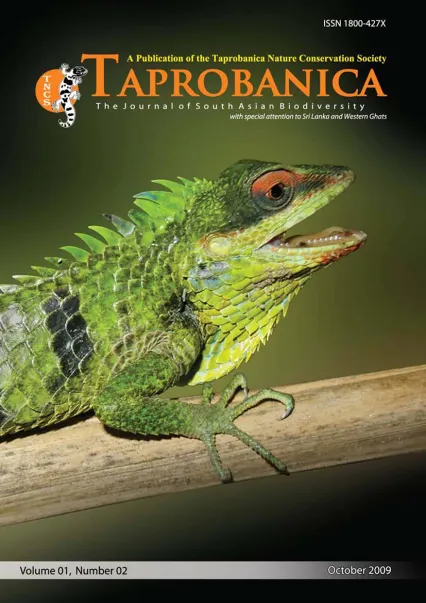

v1i2.13
Volume 1 | Number 2 | November 2009
Editorial
ISSN: 1800-427X (print)
eISSN: 1800-427X (online)
DOI:10.47605/tapro.v1i2.13
Published date: 22 November 2009
Pp. 78–79
EDITORIAL
Colin Groves
Section Editor: Taprobanica, the journal of Asian Biodiversity
Considering that Sri Lanka is not a large island, about the size of Tasmania, its biological wealth is simply astonishing. Although the reptiles and amphibians of the island are increasingly well studied, our understanding of the mammals is lagging behind. In the days when Sri Lanka was a British colony, part of British India, there were a few British biologists who paid some attention to the mammals: notably Edward Blyth, curator of mammals in the Indian Museum in Calcutta, and a few taxonomists based in the British Museum (Natural History) in London: Oldfield Thomas, Martin Hinton, Robert Wroughton and Reginald Pocock. As far as I know, none of these scientists had ever actually visited Sri Lanka. Overwhelmingly, however, the basis for our understanding of the mammalian biodiversity of Sri Lanka is due to four people: Kelaart, Phillips, Osman Hill and Deraniyagala. These four had actually lived in Sri Lanka, and Deraniyagala of course was a native of the country. Whereas the outsiders were mainly concerned with differentiating Sri Lankan mammals from those of India, the four "insiders" were alive to the diversity of mammals within Sri Lanka itself, a reality which has imposed itself more and more on our consciousness over the years.
eISSN: 1800-427X (online)
DOI:10.47605/tapro.v1i2.13
Published date: 22 November 2009
Pp. 78–79
EDITORIAL
Colin Groves
Section Editor: Taprobanica, the journal of Asian Biodiversity
Considering that Sri Lanka is not a large island, about the size of Tasmania, its biological wealth is simply astonishing. Although the reptiles and amphibians of the island are increasingly well studied, our understanding of the mammals is lagging behind. In the days when Sri Lanka was a British colony, part of British India, there were a few British biologists who paid some attention to the mammals: notably Edward Blyth, curator of mammals in the Indian Museum in Calcutta, and a few taxonomists based in the British Museum (Natural History) in London: Oldfield Thomas, Martin Hinton, Robert Wroughton and Reginald Pocock. As far as I know, none of these scientists had ever actually visited Sri Lanka. Overwhelmingly, however, the basis for our understanding of the mammalian biodiversity of Sri Lanka is due to four people: Kelaart, Phillips, Osman Hill and Deraniyagala. These four had actually lived in Sri Lanka, and Deraniyagala of course was a native of the country. Whereas the outsiders were mainly concerned with differentiating Sri Lankan mammals from those of India, the four "insiders" were alive to the diversity of mammals within Sri Lanka itself, a reality which has imposed itself more and more on our consciousness over the years.
- List of Articles & Contents





